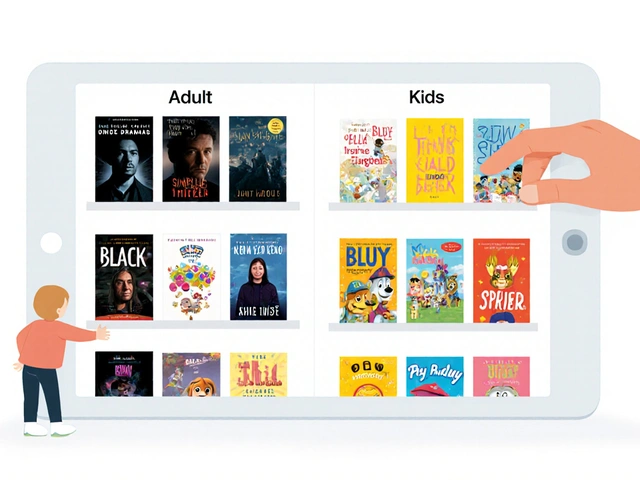16
The Four Core Marketing Strategies Explained for Effective Brand Growth

Marketing isn't just about flashy ads or viral posts. Underneath all the noise, it’s built on a handful of timeless strategies—four, to be exact. You see their fingerprints on anything from Nike's power moves to your local coffee shop’s loyalty card. Each approach is more than just a business textbook theory; it’s part of how brands become part of our daily lives. But which strategy works and when? That's what we're unpacking here—and you might be surprised by how often companies mix them up without even realizing it.
Market Penetration: Owning Your Slice of the Pie
Alright, let’s tackle the first one: market penetration. This is the classic “let’s sell more to our current people” move. If you've ever wondered why you see Coke cans at every event, or why McDonald’s fries seem to pop up in every city block, this is your answer. Companies with this strategy focus like a laser on growing their share in markets where they already play. It’s all about putting elbows out, fighting for mindshare, and converting the folks who already know you—or who buy from your rivals.
There are some sly moves here. Think about price wars. Back in 2018, Netflix dropped subscription prices in India and Brazil, undercutting local streamers. That wasn't charity—it was textbook market penetration: grab more loyalists by being the easiest, most obvious choice. Retailers get creative too. Loyalty programs, limited-time offers, gigantic billboards—every trick to get you to pick them over a lookalike product. And when it works, the results are wild. According to Statista, the global market penetration rate for mobile phones hit 67% in 2022, meaning two out of every three humans on Earth had a mobile phone in their pocket.
But here’s a tip most businesses miss: market penetration isn’t just about out-pricing competition. It can also mean finding new uses for your product, or tweaking packaging to fit local tastes. Remember when Heinz made ketchup packets with ‘’dip and squeeze''? Sounds small, but it boosted sales at fast-food drive-thrus. Even small discoveries like this can supercharge brand presence, making a brand not just familiar, but irresistible in its old stomping grounds.
If you want to play this game, here’s what matters: understand your existing customers like they’re close friends. Study their habits, poll them about why they prefer you over others—or why they don’t. Double down on what draws them in. Products rarely become overnight legends, but with smart tweaks and relentless presence, market penetration can transform slow movers into household names.
Market Development: Finding New Fans (and New Places)
This one’s the explorer’s strategy. With market development, brands look beyond their current crowd—maybe even across borders—to snag fresh buyers. Picture Apple opening stores in new countries, or Starbucks launching in China. Sometimes, it means reaching new cities, age groups, or lifestyle segments. With the rise of digital tools, it’s less about hopping on a plane and more about finding online communities that have never met your product before.
Ever notice energy drinks going from gym bros to gamers? That’s market development at work. The brand Monster once aimed only at extreme sports, but when they saw esports blowing up, they pivoted. Suddenly, they weren’t just at skate parks—they were on Twitch streams, sponsoring tournaments for teens on laptops. According to a 2024 Newzoo study, gaming sponsorships drove a 21% jump in brand recognition for these beverage companies. That’s not small potatoes.
What about businesses without the cash for global domination? Market development can be as simple as adapting a product for another purpose. Baking soda started as just a kitchen staple. Now it fights odors in fridges, cleans shoes, unclogs drains—the same powder, new markets. Or take Birchbox, which started selling beauty samples to women, then realized men need grooming help too. One pivot, double the audience.
If you’re thinking of trying this approach, here’s a field note: don’t assume new groups will like what you sell, as is. Local tastes and buying habits can be wildly different. Run small tests. Partner with influencers or micro-celebrities in those new segments. When Adidas entered India, they worked with Bollywood stars instead of just athletes, because that’s what resonated. And remember: the internet is fair game. Etsy sellers, for instance, grow overnight by targeting buyers in the US from places like Poland, South Africa, and Brazil—no need for a physical store. The trick is research, listening, and a willingness to experiment.

Product Development: Reinventing What You Offer
Some companies keep their buyers hooked with new stuff—new products, better versions, or smart add-ons. That’s product development. This strategy is fueled by restless curiosity. Maybe your original dish is a hit, but people get bored. Boom: new sauce flavor. Or, you notice everyone wants to “go green.” Suddenly, you’re selling eco-friendly packaging or vegan options. Product development keeps things fresh. People are drawn to what’s new, especially if it solves problems competitors haven’t figured out yet.
A cool example is Disney+. Yes, Disney dominated with princess movies and theme parks, but launch day featured a Star Wars spin-off, Marvel mini-series, and kid-friendly nature docs—all at once. By stacking their platform with fresh, tailored content, they snatched millions of subscribers in under three months. According to The Verge, Disney+ went from zero to over 50 million users more quickly than Netflix ever did. That’s product development with rocket fuel.
The secret? You have to listen to your audience. Take Lego—a classic toy, but it almost went bust twenty years ago because kids were turning to video games. The fix: Lego started releasing Minecraft and Star Wars sets, then launched their own video games and movies. By 2023, their revenue jumped 12% in a single year. That’s what happens when you blend old strengths with new ideas.
It’s not only about splashy launches, either. Even a tech update—better battery life, a faster app, a more comfortable shoe—counts as product development. Car manufacturers now update car software wirelessly, adding new features to vehicles already sold. Tesla, for example, sends out software updates that can even boost acceleration. Your old car suddenly feels brand-new, and you don’t even need to visit a dealer.
If you want to master this, keep asking two questions: what are your customers complaining about, and what are they excited to see next? Keep tabs on direct feedback, social media trends, and what your rivals are promising. Launch small, measure interest, and improve fast. Embrace feedback and make it central to how you design. People love it when brands show they’re listening—and they’ll come back for more.
Diversification: Playing in New Sandboxes
Diversification is gutsy. Here, you don’t just tweak your product—you throw yourself (and maybe your company) into totally new territory. Think when Amazon jumped from books to cloud computing with AWS, or when Virgin leapt from music to airlines. Done right, this can make your business future-proof, because you’re not putting all your eggs in one basket anymore.
This move isn’t for faint hearts. It usually means investing in research, building new expertise, or buying up smaller companies that already know the ropes. For every Amazon success story, you’ll find examples where this leap fell flat. Remember Google Glass? Or how Pepsi once tried launching a smartphone in Asia? Not every jump works, but when it does, it can reshape whole industries.
Successful diversification often starts by spotting a unique strength or asset you already have. Disney could leap into streaming because they had a massive archive and loyal fanbase. Apple could sell headphones, watches, and payment systems because people already trusted their gadgets. The trick is staying close enough to what you know, so your brand still makes sense, but daring enough that you’re building something new.
Here’s a neat way to think about risk: not all diversification is wild adventure. There are two types—related and unrelated. Related diversification means you’re moving into a connected area—say, a shampoo brand launching hair masks. Unrelated is bolder—a shoe company buying a vegan restaurant chain, for instance. The further out you go, the more research you need. Sticking close to your core can give you a safety net while still opening new doors.
Big tip: partner up. Technology brands often join forces with entertainment companies. Nissan, for instance, integrated Amazon Alexa into cars for voice control. Partnerships lower the risks, because each company brings an audience and expertise to the table. Always start with a pilot—test in a single city, or with one group, before splurging on a national campaign.
| Strategy | Brand | Real-life Example |
|---|---|---|
| Market Penetration | Coca-Cola | Launching more vending machines and sponsorships to boost existing sales regions |
| Market Development | Starbucks | Entering China with localized store designs and tea options |
| Product Development | Tesla | Rolling out over-the-air updates for better car features |
| Diversification | Amazon | Expanding from bookseller to cloud services (AWS) |
Nailing the right strategy depends on knowing your strengths, listening to your people, and having the nerve to adapt faster than your competition. These four core marketing strategies might sound simple on paper, but every winning brand uses them in different ways, sometimes all at once. Find the one that fits your moment or mix and match for the biggest payoff. The real magic is in how you apply them, not just knowing what they are.










Soham Dhruv
July 17, 2025 AT 23:20I genuinely appreciate how this guide breaks down the four core marketing strategies with such clarity and real-world examples. For those new to marketing, this is a breath of fresh air because the practical tips actually make the concepts approachable rather than intimidating. I've often noticed that many marketing guides get caught up in jargon, but this one does an excellent job of keeping it simple and actionable. I'd love to hear from others about which of these strategies they've tried in their own businesses and what worked best for them in today's fast-paced digital world.
Also, the inclusion of data and stats is clutch because it backs up those strategies with evidence—not just empty promises. That's crucial for making informed decisions. Has anyone here experimented with a blend of these strategies? Curious about the overlap and what’s most effective in different industries.
Kayla Ellsworth
July 19, 2025 AT 09:26Oh great, another marketing gospel sermon that tells us the ‘secret’ to success. Because obviously, marketing strategies never change and everyone’s audience is magically the same, right? 🙄 I mean, sure, breaking things down helps some newbies, but the whole notion that four strategies can cover ALL marketing needs? That’s a stretch unless you live in la-la land.
Still, I guess if you're really into simplicity and data points, this might be your cup of tea. Personally, I prefer a strategy that recognizes the chaotic unpredictability of human behavior instead of box-checking four predefined categories. But hey, what do I know?
Wilda Mcgee
July 19, 2025 AT 13:36This post is a fantastic introduction to the fundamentals! I love how it doesn’t just list strategies but digs into the ‘why’ behind each approach, which is what really empowers people to connect authentically with their audience. Marketing today isn’t just about pushing products; it’s about storytelling and genuine interaction, and this guide touches on how to do just that.
What I'd add is the importance of constantly testing and adapting those strategies. The market and consumer behaviors evolve, so what works now might need tweaking tomorrow. Has anyone tried implementing these strategies using data-driven personalization? That seems to be a game changer in creating meaningful brand growth.
Michael Gradwell
July 21, 2025 AT 14:13Honestly, this post nails some basics for people who’ve been in the weeds too long trying to reinvent marketing every day. The four strategies outlined here act like the foundation you can’t build a house without. If you skip these, you’re just throwing darts blindfolded.
It’s also refreshing that the examples are contemporary and not stuck in some 90s marketing manual. Getting into campaigns that resonate today is crucial for any brand that wants longevity. I’m curious, for those with experience here, which strategy has the biggest impact on customer loyalty?
Bob Buthune
July 22, 2025 AT 18:00The way these marketing strategies are presented feels like a subtle symphony, elegantly weaving facts with actionable insight. 📊📈 Honestly, over the years, I’ve found that understanding the core principles behind marketing is half the battle. The real challenge is in the execution, the touchpoints where brands emotionally resonate with customers. Emotion counts.
This guide seems to grasp that, which is rare. It’s interesting to consider how each core strategy intertwines with human psychology, and I would be keen to dive deeper into how these methods evolve with shifting consumer sentiments in the digital era.
Ian Maggs
July 23, 2025 AT 23:10The articulation of the four core strategies is indeed a laudable exercise in aligning modern marketing with classical wisdom. Marketing, at its essence, is communicative bridge-building—uniting the ethos of the brand with the pathos of its audience. To do this effectively requires a deep understanding not only of techniques but also the philosophical underpinnings of human desire and behaviour.
This post skilfully paints the strategies with contemporary brushstrokes, reinvigorating what might otherwise be seen as stale. It would be stimulating to extend this dialogue, perhaps debating how digital proliferation alters the efficacy and interpretation of traditional marketing canons.
Flannery Smail
July 25, 2025 AT 01:33Honestly, the ‘four core strategies’ hype is just recycled nonsense repackaged for the clickbait audience. Marketing isn’t something you can dumb down into a neat list of four bullet points and call it ‘effective.’ It’s messy, complicated, and context-dependent—basically the exact opposite of this neat little guide.
Anyone who thinks they can ‘choose the right approach’ by following such advice is in for a rude awakening. I’m not saying the post lacks value entirely, but relying on a rigid framework like this is more limiting than empowering.
Chris Atkins
July 26, 2025 AT 05:20This guide is a cool starting point—especially for small businesses trying to figure things out without a huge budget. It lays out a handy roadmap in friendly language, which is something a lot of marketing materials miss. Sometimes simple is actually better when you’re trying to avoid getting overwhelmed or lost in fancy trends.
One thing I’d be curious about is how these strategies shift based on your audience’s culture or values? Since marketing is a global game, local differences can really change how you execute, right? Would love to hear if anyone’s combined these core strategies with cultural insights effectively.
Emmanuel Sadi
July 27, 2025 AT 09:06I dunno, while the stats and 'real-world examples' sound promising, I suspect these kinds of guides often overestimate their usefulness. Marketing 'fundamentals' are sometimes preached like gospel but honestly, what’s fundamental for one brand is irrelevant for another. The cookie-cutter approach bores me because people forget marketing is really about creativity, not mechanization.
Still, it’s funny to see how everyone parades around these four strategies as if they’re the holy grail. The truth is in the nuance and the off-beat ideas nobody dares to try.
Jen Becker
July 28, 2025 AT 12:53Ugh strictly no thanks, marketing guides like these always promise the moon and deliver a handful of clichés. Like, how is this gonna make a brand ‘truly connect’ when it’s basically another cookie-cutter blueprint? The whole thing feels so overhyped. Who even follows these ‘strategies’ religiously?
But I guess for rookies who just wanna sound smart in meetings, sure, this might have some surface level value. Just don’t expect magic. Marketing is more art than this robotic playbook nonsense.